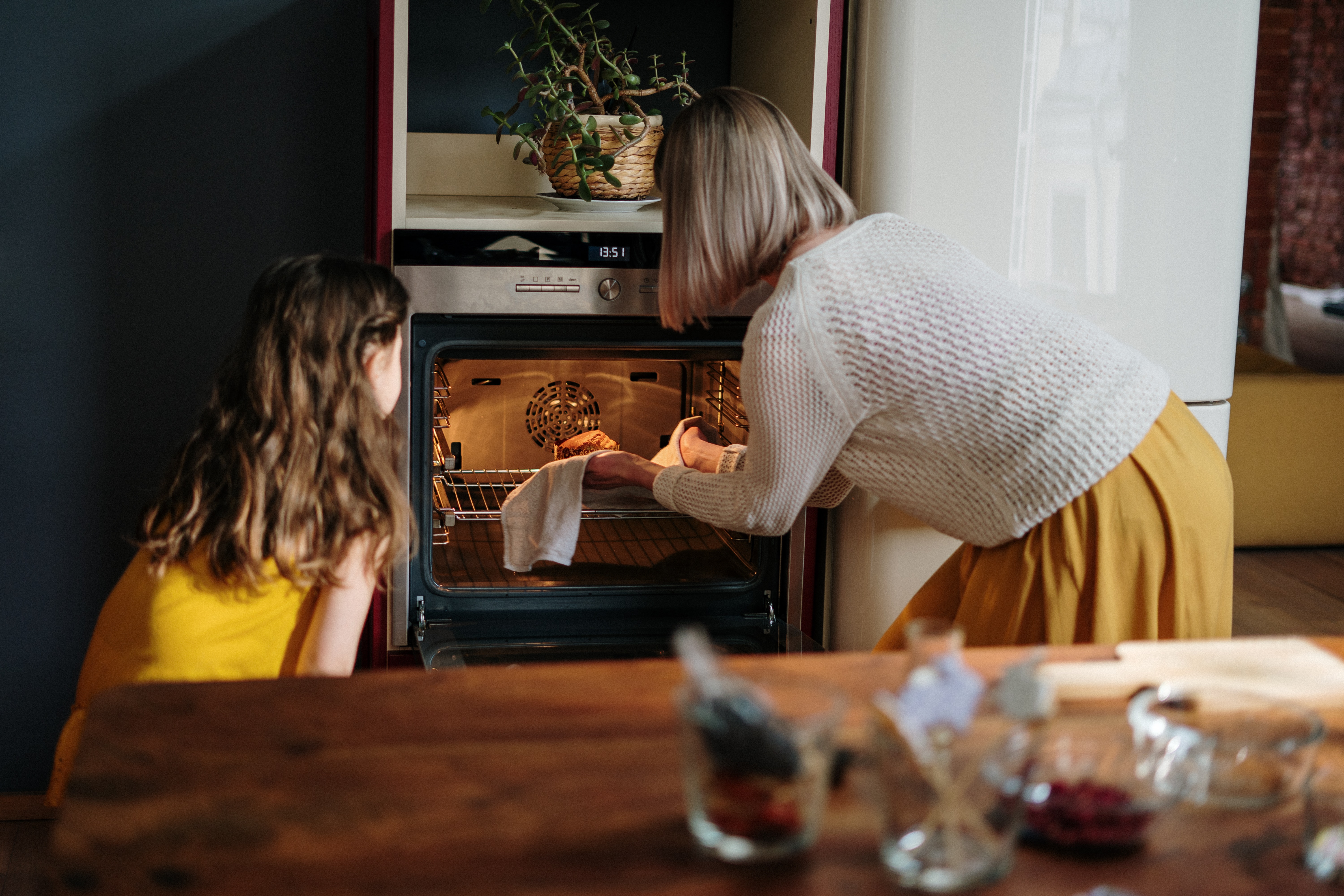 CONVENTIONAL vs. CONVECTION Oven Comparison
CONVENTIONAL vs. CONVECTION Oven Comparison
If you are in the market for a new oven, there are two types that you can choose from conventional or convection. Consider the pros and cons before investing your money. Knowing and assessing the differences between the two will help you make the right choice that will work best for your needs and budget.
Heat Source
So what’s the difference (CONVENTIONAL vs. CONVECTION) ? Technically, all ovens cook by convection, where the hot interior air does the cooking. Standard or conventional ovens use natural convection and radiant heat to cook food. The burners heat the air inside the oven and transfer the heat to the surface of the food. With convection ovens, an insulating layer of air that is cooler than the overall interior of the oven surrounds the food. Convection ovens have an additional heating element and an extra motorized fan, which blows heated air throughout, diminishing the cooler air next to the food. A convection oven has upper, lower and back heating sources.
Internal Temperature
Regulating the internal temperature is easier with convection ovens because the fan circulates the hot air continuously. The third heating element located near or around the fan in the back of the oven heats the air to a uniform temperature before it enters the oven cavity. The balanced heat circulation prevents hot spots. Conventional ovens tend to have hot spots. Food on the bottom rack tends to overcook or burn because it is close to the heat source. In similar fashion, placing food near the top of the oven often overcooks it because it is close to the upper heat element. Furthermore, the rising heat tends to accumulate at the top. Placing food near the center of the oven will yield better cooking results.
Cooking Time
Foods cook much faster in convection ovens. Convection cooking speeds up the chemical reactions of food during cooking. Baked goods release steam quicker, roasted meats render fats sooner and sugars in vegetables caramelize faster. A convection oven cooks food 25 percent faster than a conventional oven.
Cooking Quality
Convection ovens cook food more evenly compared to conventional ovens. Meats cook faster with more juice retained inside. Convection ovens cook meats with deeper flavors, crispier edges and are tenderer inside. In some cases, cooking with conventional ovens can result in drier meats, with a burnt outer part and not cooked well inside. Convection ovens can cook different foods evenly in different pans on different racks at the same time without transferring tastes, while conventional ovens cannot.
Types
Conventional ovens come in two types — range and deck. A range oven, also known as the general-purpose oven, is a part of a cooking system. It usually has a stove on top and an oven at the bottom. Some models may come with an incorporated microwave or convection oven at the center. A range oven may use electric or gas heat source. Deck ovens save space. They can be freestanding or built-in. Deck ovens may use electric or gas heat source. You can choose from single, double or triple deck ovens. Convection ovens may come in a range or deck along conventional ovens to allow cooking preferences. There are also portable or countertop convection ovens that you can buy if you have a conventional oven but would like to use a convection oven to cook small amounts of food.
Price
Most convection ovens are pricier than conventional ovens; however, consumers find they quickly recoup the higher initial cost from the energy savings achieved with faster cooking time.
Call Absolute Appliance Repair NOW if you have any problems with your oven!
Phone lines
(415) 831-1259 San Francisco
(415) 388-0690 Marin County
(650) 525-0512 South SF / Daly City / Pacifica


